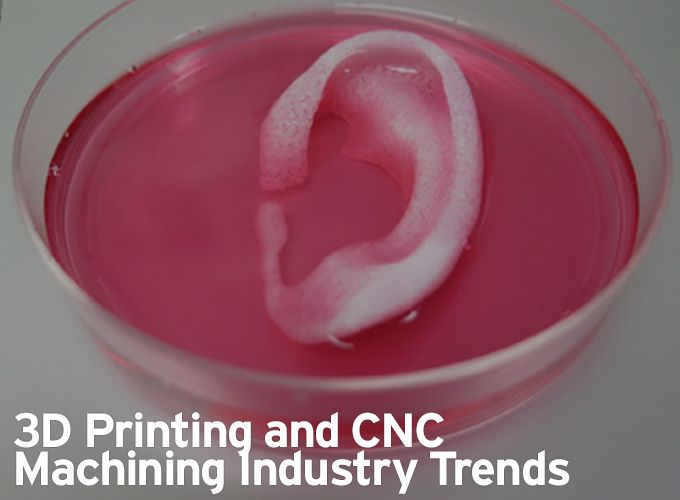Instead of viewing 3D printing as a replacement to the standard process of CNC machining, those who have successfully merged the two technologies view additive manufacturing as a process that can complement their current operations.
Megan Ray Nichols | Schooled by Science
When it comes to producing parts, tools and finished goods, manufacturers now have more options than ever before. The trend of 3D printing, which is still in its early stages of development, has already taken the manufacturing industry by storm. Now that it's paired with traditional CNC machining, some companies are seeing record profitability and greater efficiency across the board.
Aerospace Design & Development
The majority of 3D printers currently work with various plastic mediums. This is useful when producing basic parts and items, but even composite and hardened plastics have been quite limited in aerospace design and development thus far. Recent technological breakthroughs, including a push for 3D printers that work with metal and aluminum materials, will likely change that in the near future.
Hybrid printing is also showing a lot of promise. By combining the best of 3D printing and traditional CNC machining, manufacturers have even greater flexibility and control over projects. Sometimes referred to as metal additive manufacturing, this process is both speedy and efficient.
Lockheed Martin Space Systems and the United States Air Force have entered a partnership to produce an advanced extremely high-frequency (AEHF-6) satellite. In a demonstration of the advancements to come, the endeavor features a remote interface unit that is printed from aluminum. Although production is already underway, the satellite isn't expected to launch until 2018 at the earliest.
Automotive Assembly
Although metal additive manufacturing has plenty of uses in the automotive industry, experts are also exploring alternative materials. PEEK, a next-gen polymer made of a highly specialized composite, can replace metal in many applications. This medium also works well with modern 3D printers.
Ford has already begun printing some parts, mainly spoilers for their performance vehicle models, but they hope to expand to other parts as soon as possible. Armed with a 3D printer that can accommodate printed parts of nearly any shape or size, they're already moving full steam ahead.
CNC machining also has its place in the automotive assembly process. It’s a reliable method of producing products both large and small. Thanks to CNC machining, auto manufacturers are able to build more precise and reliable starters. Today, many automotive processes can thanks CNC machining for everything from prototypes to finished fabricated parts.
Medical Device Manufacturing
The medical device industry also stands to benefit from the marriage of 3D printing and CNC machining. Many companies and brands are already using 3D printing and aluminum prototyping to plan new devices, introduce product improvements and address the shortcomings of any finished goods.
Manufacturers are already using additive manufacturing and 3D printing to outfit their patients with customized medical implants while significantly reducing waiting times. For those with life-threatening illnesses or disease, breakthroughs like this have the potential to prolong lives and even enhance the quality of life for those who are currently suffering.
Despite the usefulness of 3D printing, many manufacturers in the medical sector are hesitant to fully embrace the technology. Due to the complex nature involving the design, balance and durability of medical devices, current 3D printers and materials just haven't been refined enough. As a result, traditional CNC machining remains the preferred method for many manufacturers.
Printing a medical device is one thing, but 3D printing a human organ is an entirely different matter. It may seem like something out of the movies, but some industry pioneers are already exploring the idea of producing replacement parts for the human body. The technology is currently limited by the availability of materials. Since it requires biological tissue, the medium isn't exactly easy to come by.
The Future of 3D Printing and CNC Technology
Instead of viewing 3D printing as a replacement to the standard process of CNC machining, those who have successfully merged the two technologies view additive manufacturing as a process that can complement their current operations. Not only does this make it easier to adapt and embrace 3D printing, but it also promotes quicker advancements and even more breakthroughs in the future.
Megan Ray Nichols is a blogger and freelance science writer. She posts weekly on her blog, Schooled By Science, about the latest news in science and technology. When she isn’t writing, Megan enjoys reading and hiking.
The content & opinions in this article are the author’s and do not necessarily represent the views of ManufacturingTomorrow
Comments (0)
This post does not have any comments. Be the first to leave a comment below.
Featured Product


